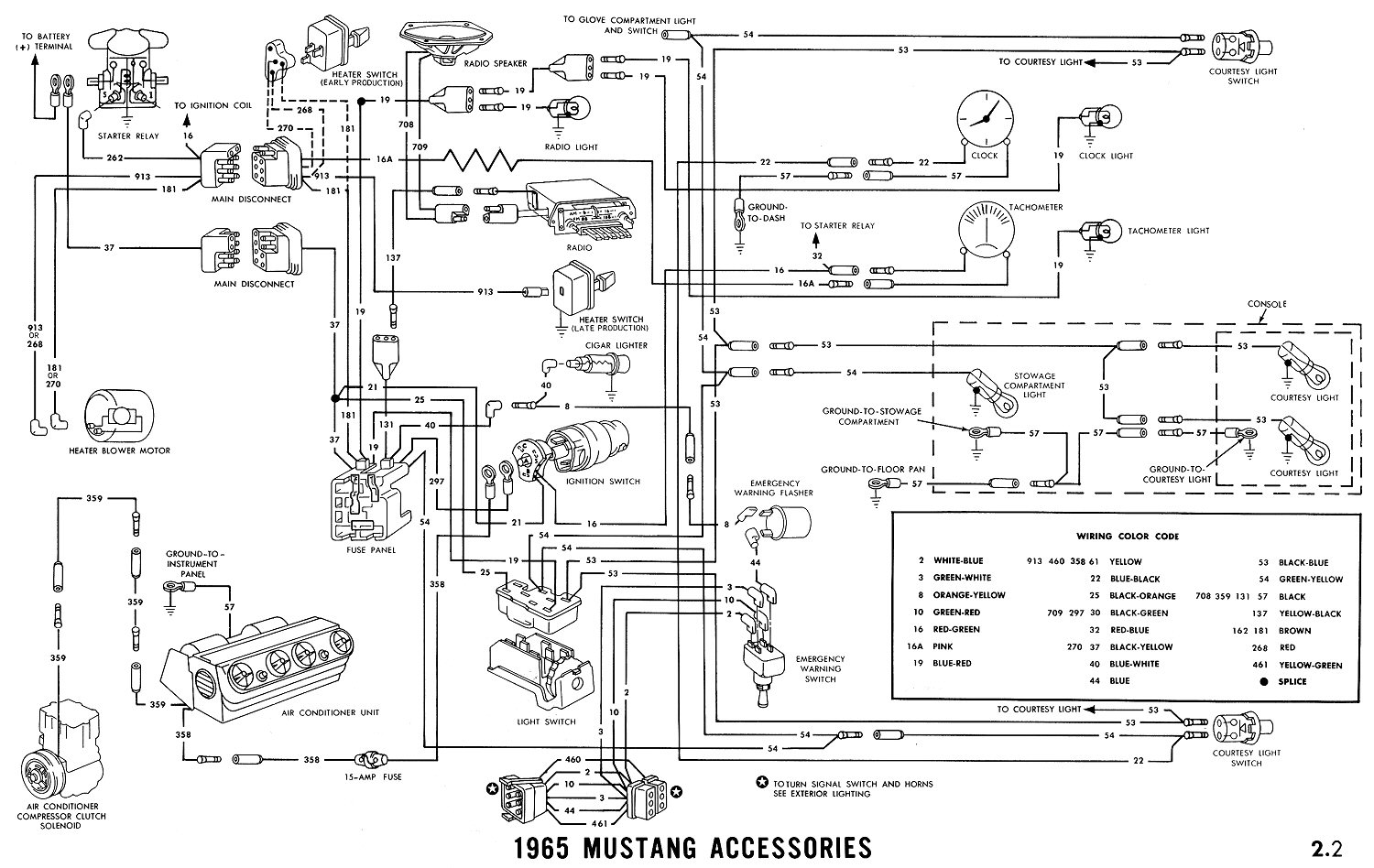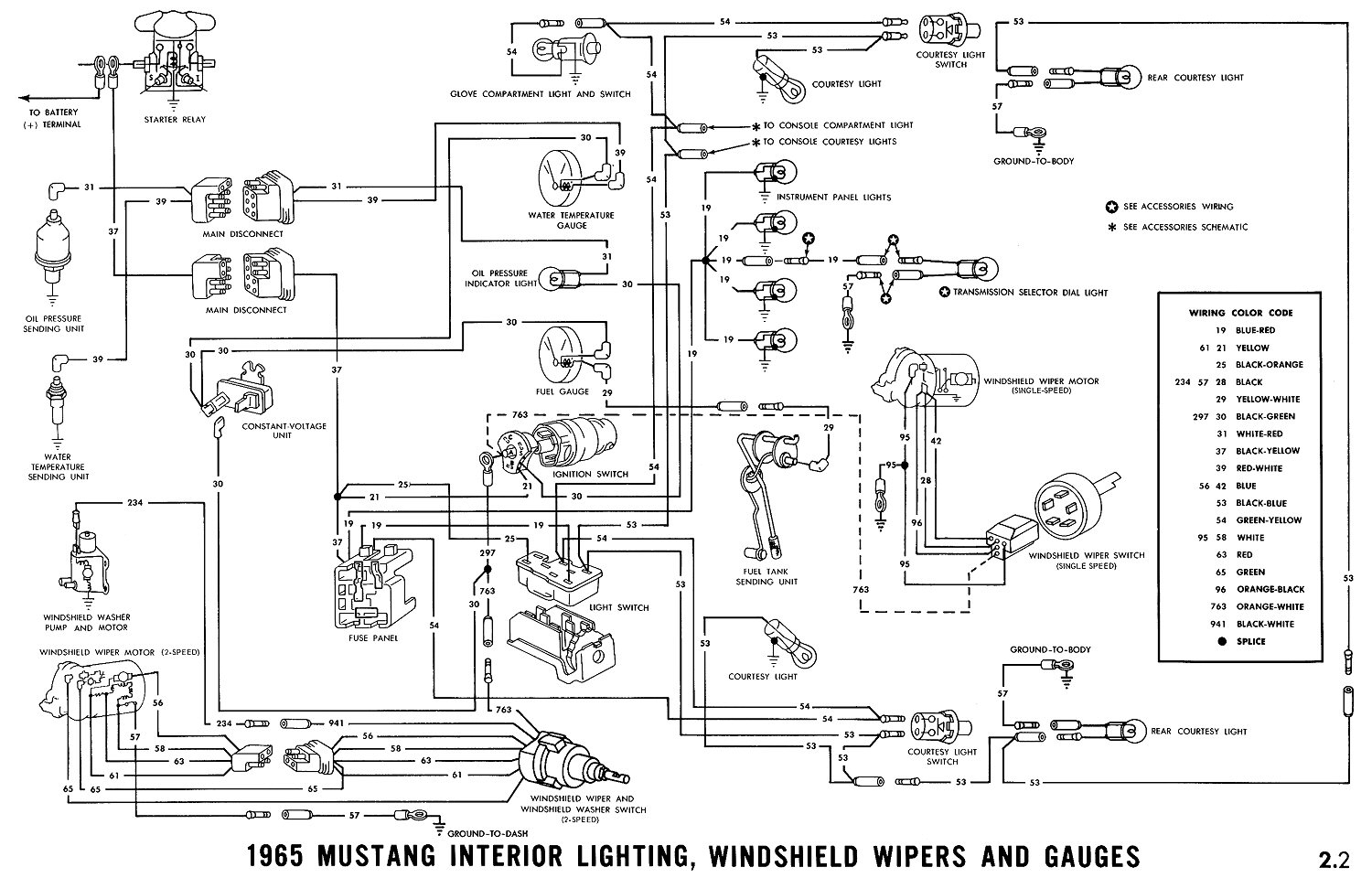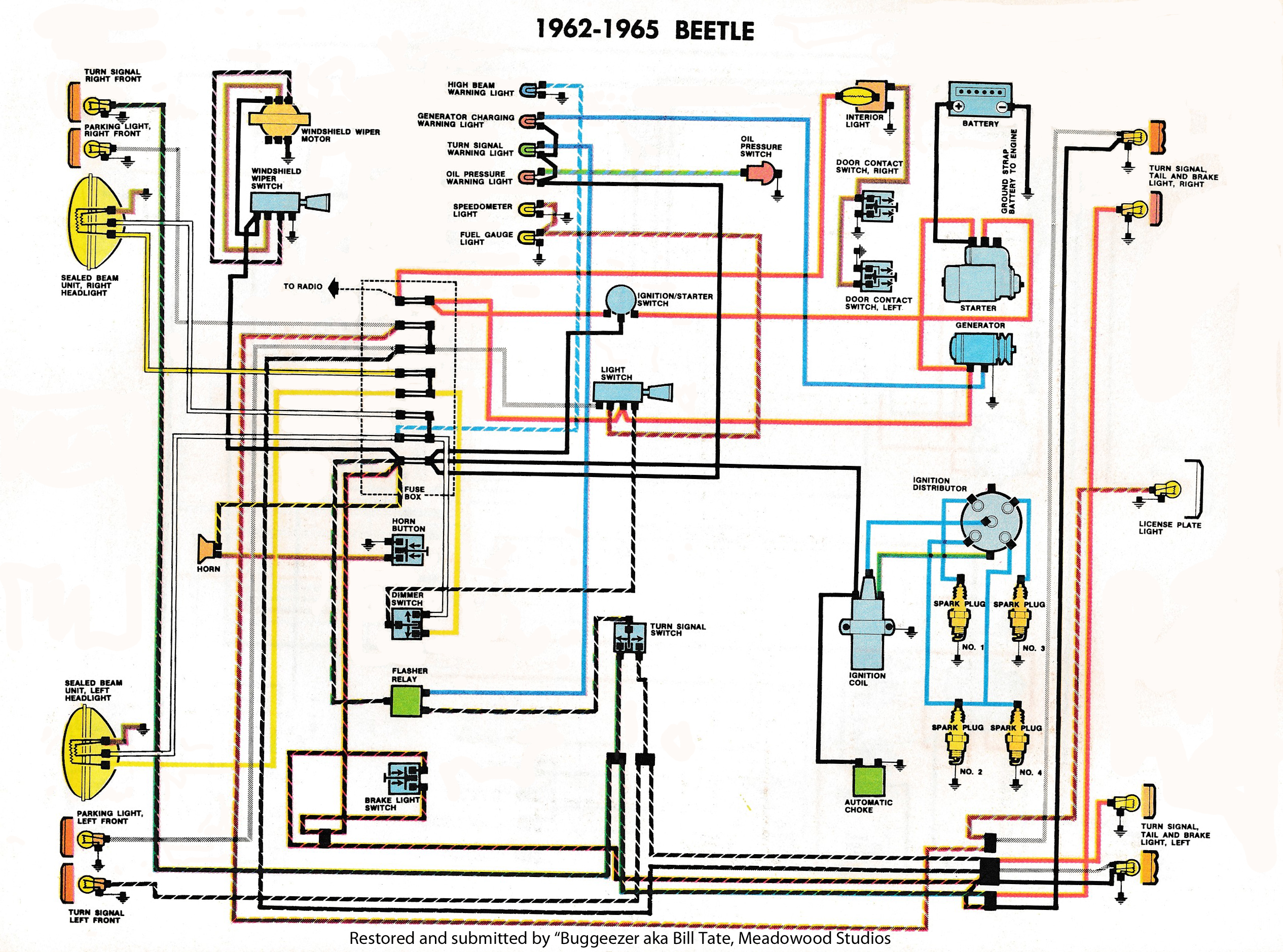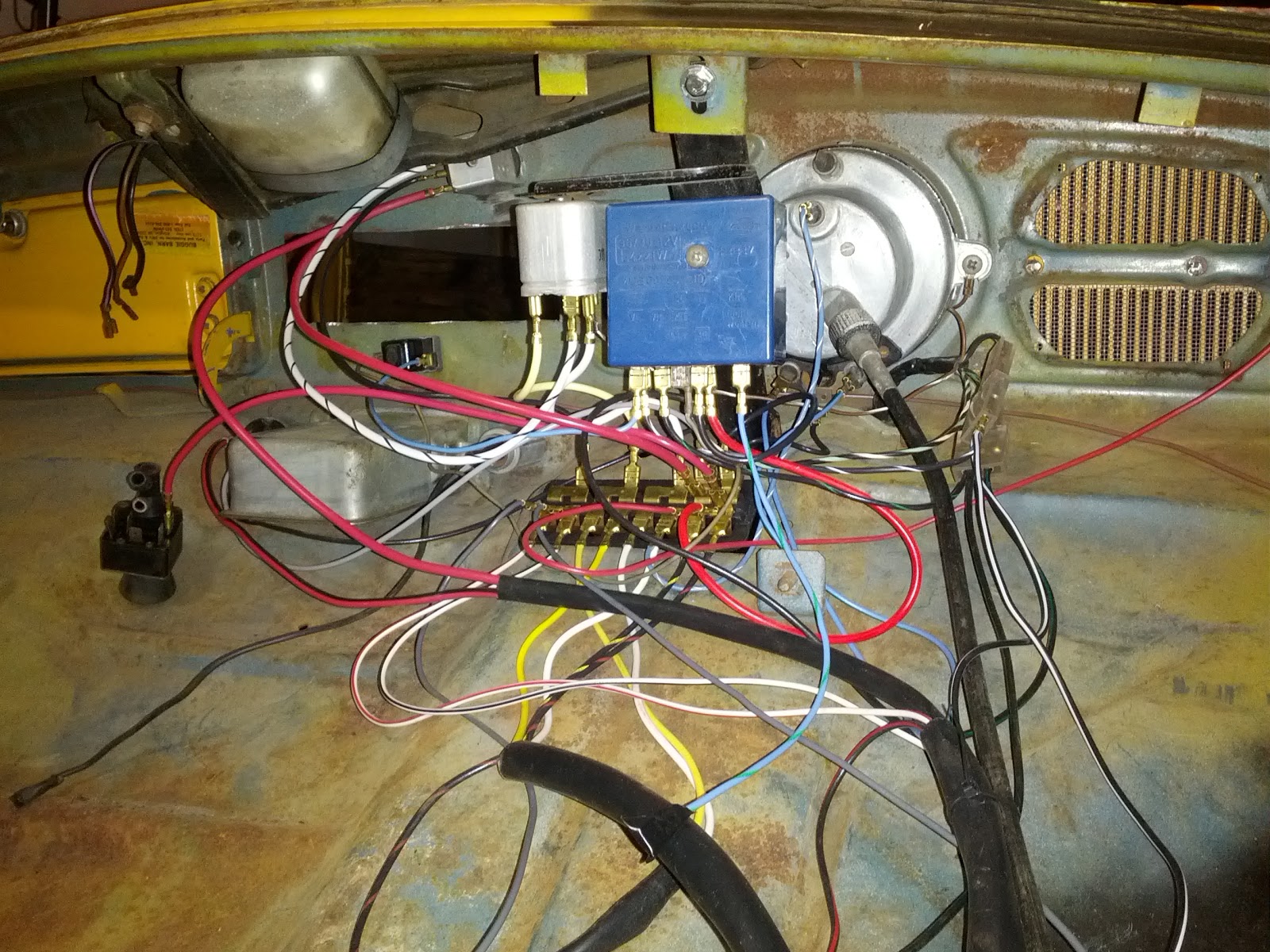Fuse box wiring diagram for 1965 VW Bug sets the stage for this enthralling narrative, offering readers a glimpse into a story that is rich in detail with exclusive interview style and brimming with originality from the outset. Stepping back in time to the iconic 1965 Volkswagen Beetle, affectionately known as the VW Bug, brings to mind images of classic design and unbridled joy.
But beneath that charming exterior lies a complex electrical system that can leave even seasoned mechanics scratching their heads. This is where the fuse box wiring diagram comes in, acting as a roadmap to navigating the intricacies of the Beetle’s electrical circuitry.
Understanding the fuse box wiring diagram is essential for anyone who wants to troubleshoot electrical problems, perform routine maintenance, or simply gain a deeper understanding of their beloved VW Bug.
From identifying the fuse box location and its components to deciphering the symbols on the wiring diagram, we’ll cover everything you need to know to confidently tackle electrical issues. We’ll also delve into common fuse box problems, provide step-by-step instructions for replacing blown fuses, and offer tips for preventing future electrical headaches.
So, buckle up and prepare to embark on a journey into the heart of your 1965 VW Bug’s electrical system.
Introduction

The 1965 Volkswagen Beetle, affectionately known as the VW Bug, is a classic car that continues to capture hearts worldwide. Its simple design, affordability, and reliability made it a global phenomenon. While the Bug’s mechanical simplicity is a major part of its charm, it also means understanding its electrical system is crucial for any owner or enthusiast.The fuse box wiring diagram is a vital tool for diagnosing and troubleshooting electrical issues.
It acts like a map, guiding you through the intricate network of wires, fuses, and components that power the car. By understanding the diagram, you can quickly identify potential problems, locate the correct fuse, and make necessary repairs.Working with electrical systems, however, can be dangerous.
Improper handling can lead to electrical shocks, short circuits, and even fires. It’s essential to take safety precautions and follow proper procedures to avoid accidents. Always disconnect the battery before working on any electrical components and consult a qualified mechanic if you’re unsure about any procedure.
Safety Precautions
It’s important to prioritize safety when working with electrical systems. Here are some essential precautions to keep in mind:
- Always disconnect the battery before working on any electrical components. This prevents accidental shocks and short circuits.
- Use insulated tools and wear appropriate protective gear, such as gloves and safety glasses.
- Never work on electrical systems while the engine is running.
- Be aware of the location of the fuse box and the function of each fuse.
- If you’re unsure about any procedure, consult a qualified mechanic.
Fuse Box Location and Identification

The fuse box in your 1965 VW Bug is a vital component responsible for protecting the electrical system from overloads. Understanding its location and identification is crucial for proper maintenance and troubleshooting.The fuse box is situated on the left side of the dashboard, below the steering wheel.
It’s a rectangular box with a metal cover, usually painted black or grey. The cover is secured by a few screws, which you’ll need to remove to access the fuses.
Fuse Box Cover Markings
The fuse box cover has markings that help identify the fuses. The markings typically include:
- Fuse numbers:These numbers correspond to the specific circuits that the fuses protect.
- Circuit descriptions:These descriptions indicate what electrical component each fuse is responsible for, such as headlights, taillights, or radio.
- Fuse amperage:The amperage rating of each fuse is also listed, indicating the maximum current that the fuse can handle before blowing.
Fuse Box Components
The fuse box in your 1965 VW Bug is the heart of your electrical system, housing essential components that protect your car’s electrical circuits and ensure everything runs smoothly. It’s like a mini power station for your ride! Let’s break down what’s inside and how it all works together.
Fuse Box Components
The fuse box is home to a few key players that keep your Bug’s electrical system humming. Here’s the breakdown:
- Fuses:These little guys are the first line of defense against electrical overloads. They’re basically tiny wires designed to melt and break the circuit if too much current flows through them. Think of them as sacrificial lambs for your car’s electrical system.
They come in different amperage ratings, which determine how much current they can handle before blowing. A blown fuse is a sign that something might be wrong in your circuit, so it’s important to replace it with the correct amperage fuse.
- Relays:Relays are like tiny electrical switches that control larger electrical loads. They’re activated by a small electrical signal and then switch a larger current on or off. They’re like the gatekeepers of your car’s electrical system, deciding which circuits get the power they need.
For example, a relay might control the power to your headlights or your horn.
- Terminals:These are the connection points for the wires that run throughout your car’s electrical system. They act as the junctions where different wires meet, allowing electricity to flow through the circuits. Think of them as the crossroads of your car’s electrical system.
Fuse Box Layout
The fuse box layout for a 1965 VW Bug is fairly straightforward, with each fuse protecting a specific circuit. This table provides a detailed breakdown of the fuses and their corresponding circuits, along with their amperage ratings:
| Fuse Number | Circuit | Amperage |
|---|---|---|
| 1 | Headlights (low beam) | 15A |
| 2 | Headlights (high beam) | 15A |
| 3 | Taillights, license plate light | 10A |
| 4 | Turn signals, hazard lights | 10A |
| 5 | Horn, windshield wipers | 10A |
| 6 | Radio, heater fan | 10A |
| 7 | Cigarette lighter, clock | 10A |
| 8 | Fuel gauge, temperature gauge | 10A |
| 9 | Oil pressure gauge, generator field | 10A |
| 10 | Spare | 10A |
| 11 | Starter | 30A |
| 12 | Ignition coil | 10A |
| 13 | Alternator | 15A |
Wiring Diagram Interpretation: Fuse Box Wiring Diagram For 1965 Vw Bug
A wiring diagram is a visual representation of the electrical system in your 1965 VW Bug. It shows how the different components are connected and how electricity flows through the system. Understanding the diagram is crucial for troubleshooting electrical problems, making modifications, and maintaining your car’s electrical system.
Understanding the fuse box wiring diagram for a 1965 VW Bug is crucial for troubleshooting electrical issues. It’s similar to deciphering a complex network of pathways, like the intricate wiring diagram for a Dewalt DW705 switch, which can be found here.
With the right knowledge, you can navigate the fuse box diagram and ensure your classic VW runs smoothly.
Basic Principles of Reading a Wiring Diagram
A wiring diagram is a simplified representation of the electrical system. It uses lines to represent wires, symbols to represent components, and numbers to identify specific points in the system. The diagram shows the flow of electricity from the battery to the various components, such as the headlights, taillights, ignition system, and accessories.
Symbols Used on the 1965 VW Bug Fuse Box Diagram
The 1965 VW Bug fuse box diagram uses a variety of symbols to represent different components. Here are some common symbols:
- Battery:A circle with a plus (+) and minus (-) sign inside
- Fuse:A rectangle with a wavy line inside
- Switch:A rectangle with a diagonal line inside
- Light Bulb:A circle with a cross inside
- Motor:A circle with a letter “M” inside
- Relay:A rectangle with a coil and contacts inside
Interpreting the Wiring Diagram
Here’s a step-by-step guide on how to interpret the 1965 VW Bug fuse box wiring diagram:
- Identify the fuse box location:The fuse box is usually located under the dashboard on the driver’s side.
- Locate the fuse you want to examine:The fuse box diagram will show the location of each fuse. Each fuse is labeled with a number and a corresponding circuit.
- Trace the wire:Follow the wire from the fuse to the component it powers. The diagram will show the path of the wire, including any switches or relays that are part of the circuit.
- Check for continuity:Use a multimeter to check for continuity along the wire path. This will ensure that the wire is not broken or damaged.
- Inspect the component:Once you’ve traced the wire, inspect the component to ensure it is working properly.
Common Fuse Box Issues
Your Volkswagen Bug’s fuse box is like the heart of its electrical system. It’s responsible for protecting your car’s electrical components from damage due to overloads or short circuits. But, just like any other vital part, it can face some issues.
Here’s a breakdown of some common fuse box problems and how to deal with them.
Fuse Blowing Frequently
The most common issue with a fuse box is a fuse blowing repeatedly. This is usually a sign of an underlying electrical problem in the circuit that the fuse protects. The problem could be a short circuit, a faulty component, or even a loose connection.
- Short Circuit:This happens when an electrical current takes an unintended path, often due to damaged wiring or worn insulation. This creates a high resistance path and causes the fuse to blow.
- Faulty Component:A faulty electrical component, such as a headlight or a taillight, can draw excessive current and cause the fuse to blow.
- Loose Connection:A loose connection in the circuit can create a high resistance path, leading to excessive heat and ultimately a blown fuse.
Fuse Box Corrosion
Over time, the fuse box can become corroded, especially if the car is frequently exposed to moisture. This corrosion can interfere with the electrical connections and lead to a variety of problems, including blown fuses, dim lights, and even electrical fires.
- Moisture:Rain, snow, or even humidity can cause corrosion in the fuse box, leading to electrical issues.
- Salt:Road salt can be particularly corrosive, especially during winter months.
- Dirt and Debris:Dust, dirt, and other debris can accumulate in the fuse box, creating a conducive environment for corrosion.
Fuse Box Wiring Problems
The wiring in the fuse box can become damaged or worn over time. This can lead to loose connections, short circuits, and blown fuses.
- Worn Insulation:The insulation on the wires can become brittle and crack, exposing the bare wires and increasing the risk of a short circuit.
- Loose Connections:Connections in the fuse box can loosen over time, causing resistance and potentially leading to a blown fuse.
- Damaged Wires:The wires themselves can be damaged by wear and tear, rodents, or even accidental damage during repairs.
Fuse Replacement

Replacing a blown fuse in your 1965 VW Bug’s fuse box is a straightforward process, but it’s crucial to do it correctly to avoid further damage to your car’s electrical system. A blown fuse is like a safety valve, protecting your electrical system from overload.
Fuse Amperage Rating
The amperage rating of a fuse is the maximum amount of current it can handle before blowing. Using the wrong amperage fuse can lead to serious consequences, including:
- Overheating and melting of wires:If the fuse is rated too low, it will blow frequently, but the wires carrying the current might overheat and melt, causing a fire hazard.
- Damage to electrical components:A fuse rated too high won’t protect your components from overload, leading to damage or failure.
- Electrical system failure:If a fuse blows due to a short circuit, replacing it with a higher amperage fuse might not solve the problem and could cause further damage.
Always use fuses with the correct amperage rating as specified in your owner’s manual or on the fuse box diagram.
Fuse Replacement Steps
- Identify the blown fuse:Check the fuse box diagram to locate the fuse associated with the malfunctioning circuit.
- Turn off the ignition:This is essential for safety, preventing accidental electrical shocks.
- Remove the blown fuse:Use a fuse puller or a small flat-head screwdriver to carefully remove the blown fuse.
- Inspect the blown fuse:A blown fuse will have a broken wire inside the glass or ceramic casing.
- Install the new fuse:Insert the new fuse of the correct amperage rating into the empty fuse holder.
- Turn on the ignition:Check if the circuit is now working correctly.
Preventing Future Fuse Failures
- Regular inspection:Periodically check your fuse box for signs of corrosion, loose connections, or damaged fuses.
- Maintain electrical connections:Ensure all electrical connections are clean and tight to prevent overheating and potential shorts.
- Avoid overloading circuits:Don’t connect too many electrical devices to a single circuit, which can overload the fuse and cause it to blow.
- Address underlying issues:If a fuse keeps blowing, it’s a sign of a bigger problem in the electrical system. It’s essential to diagnose and fix the root cause to prevent further damage.
Electrical System Maintenance

Keeping your VW Bug’s electrical system in tip-top shape is crucial for a smooth ride and a reliable experience. A little preventive care goes a long way in ensuring your electrical system functions flawlessly, just like a well-tuned engine.
Regular Fuse Box Inspections
Regular inspections of your fuse box are essential for preventing electrical issues. It’s like checking your car’s vital signs – ensuring everything is running smoothly. A quick visual inspection can reveal signs of trouble, like blown fuses or loose connections.
- Check for burnt or corroded fuses:These are telltale signs of a fuse that has done its job and needs replacing. A burnt fuse can be a safety hazard, so replace it promptly.
- Inspect for loose connections:A loose connection can lead to intermittent electrical problems. Tighten any loose screws or terminals to ensure a secure connection.
- Look for signs of moisture or damage:Moisture can cause corrosion and electrical shorts. If you see any signs of moisture or damage, address the issue immediately to prevent further problems.
Fuse Box Cleaning and Organization
A clean and organized fuse box makes it easier to identify and replace fuses. Just like a tidy workspace, a clean fuse box allows you to work efficiently and avoid confusion.
- Dust and debris removal:Regularly clean the fuse box using a soft brush or compressed air to remove dust and debris. This helps prevent short circuits and ensures proper contact between the fuses and terminals.
- Labeling fuses:Labeling fuses can save you time and hassle when troubleshooting electrical problems. You can use small labels or a permanent marker to clearly identify each fuse and its corresponding circuit.
- Organizing spare fuses:Keep a spare set of fuses handy, organized by amperage, in a designated container. This ensures you have the right fuse readily available when needed.
Additional Resources
You’ve got the basics down, but sometimes you need a little extra help. Here’s where to find those additional resources to get you back on the road.
Online Wiring Diagrams
Online resources can be a lifesaver when you need a detailed wiring diagram. Here are a few places to check:
- Volkswagen Owners Club:This site offers a wealth of information for VW enthusiasts, including wiring diagrams for various models.
- The Samba:Another popular online forum for VW owners, The Samba features a dedicated section for technical information, including wiring diagrams.
- eBay:You can often find downloadable wiring diagrams for sale on eBay, though be sure to check the seller’s ratings before purchasing.
Repair Manuals and Troubleshooting Guides
Sometimes you need more than just a wiring diagram. Repair manuals and troubleshooting guides provide step-by-step instructions for diagnosing and fixing electrical issues. Here are some popular options:
- Chilton’s Repair Manual:A classic choice for DIY mechanics, Chilton’s manuals offer comprehensive coverage of repair procedures.
- Haynes Repair Manual:Another well-respected brand, Haynes manuals are known for their clear instructions and detailed illustrations.
- Bentley Publishers:For more in-depth information, consider a Bentley Publishers manual. These manuals are often favored by professional mechanics.
Volkswagen Repair Specialists
If you’re not comfortable tackling electrical repairs yourself, it’s always best to seek professional help. Here are some resources for finding qualified VW repair specialists:
- Volkswagen Dealerships:While dealerships can be expensive, they have certified technicians who are familiar with VW models.
- Independent Repair Shops:Many independent shops specialize in Volkswagen repairs and often offer more affordable rates than dealerships.
- Online Forums:Online forums for VW owners are a great place to get recommendations for local repair shops.
Safety Precautions

Working on your car’s electrical system can be a bit tricky, especially if you’re not familiar with it. You’re dealing with electricity, and that’s something you need to respect. Think of it like this: You wouldn’t go swimming in a pool without knowing how to swim, right?
Same thing here. Always prioritize safety to avoid any unwanted surprises.Here’s the lowdown on keeping yourself safe while you’re working on your 1965 VW Bug’s fuse box:
Disconnecting the Battery
Before you even think about touching any wires, you need to disconnect the battery. This is the most important safety step, and it’s super easy. Just use a wrench to loosen the negative terminal (the one with the black cable) and then the positive terminal (the one with the red cable).
Make sure you disconnect the negative terminal first, and reconnect it last. Why? Because disconnecting the negative terminal first prevents any potential sparks from jumping to the chassis or frame.
Working with Electricity, Fuse box wiring diagram for 1965 vw bug
When working with electrical components, always be mindful of the following:
- Always wear safety glasses to protect your eyes from potential sparks or flying debris.
- Use insulated tools whenever possible to avoid electrical shock. If you’re using a screwdriver, make sure the handle is insulated.
- Avoid touching any exposed wires or metal parts that might be carrying electricity.
- Keep your hands dry and avoid working in wet or damp conditions. Water can conduct electricity and increase the risk of shock.
- If you feel a tingling sensation or shock, immediately stop working and disconnect the battery.
- Be careful of hot components. Some components, like the fuse box itself, can get hot after prolonged use.
Using a Multimeter
A multimeter is a handy tool for testing electrical circuits. It can help you determine if a fuse is blown, check the voltage of the battery, and measure the current flowing through a circuit. But remember, it’s a powerful tool, so use it with caution:
- Always make sure you understand how to use the multimeter correctly before you start testing anything. Read the instruction manual carefully.
- When testing electrical components, always disconnect the battery first.
- Avoid touching the probes while the multimeter is powered on.
- Be careful not to drop the multimeter or damage the probes.
Conclusion
So, there you have it, folks! We’ve gone through the ins and outs of the fuse box wiring diagram for your trusty 1965 VW Bug. From identifying the location and components to interpreting the diagram and troubleshooting common issues, you’re now equipped with the knowledge to tackle electrical problems with confidence.Remember, understanding your fuse box wiring diagram is crucial for maintaining your Bug’s electrical system.
It’s like having a map to navigate the intricate network of wires and circuits. By knowing how things connect, you can quickly diagnose and fix issues before they escalate.
Seeking Professional Help
If you’re ever unsure about anything related to your Bug’s electrical system, don’t hesitate to seek professional help. A qualified mechanic can diagnose and repair complex problems, ensuring your safety and the longevity of your beloved vehicle.
Popular Questions
Where can I find a detailed wiring diagram for my 1965 VW Bug?
You can find detailed wiring diagrams online through resources like the Volkswagen Owners Club, or through specialized repair manuals.
What are some signs that my fuse box might be malfunctioning?
Common signs include blown fuses, flickering lights, electrical components not working, and a burning smell coming from the fuse box.
Can I use any type of fuse in my VW Bug’s fuse box?
No, it’s crucial to use fuses with the correct amperage rating as specified in the wiring diagram or owner’s manual. Using the wrong fuse can lead to overheating and electrical damage.
How often should I inspect my fuse box?
Regularly inspecting your fuse box, at least once a year, is recommended to ensure the fuses are in good condition and the connections are secure.